- Home
- Deborah Harkness
The World of All Souls Page 22
The World of All Souls Read online
Page 22
Knights Templar
The Knights Templar are probably the best-known military order of knights formed during the Middle Ages. The general purpose of these societies was to support the Roman Catholic Church in its quest to gain control of the Holy Land from Muslim forces. The church’s stated goal was to ensure the safe passage of Christians to holy sites, but the wider objective was to bring the Eastern Orthodox Church back under Roman Catholic dominance. The military campaigns to accomplish this, known as the Crusades, took place mainly from about 1100 to 1300.
During the First Crusade, in 1099, Crusaders brutally conquered Muslim and Jewish forces in Jerusalem and established the Kingdom of Jerusalem as a state. The result was that Christians began to make pilgrimages to the Holy Land, although such journeys were dangerous. The city of Jerusalem was relatively safe, but the surrounding Crusader states were full of highwaymen and thieves who preyed on travelers.
About twenty years after the European Crusaders conquered the city, the French knight Hugues de Payens proposed the creation of a monastic order to protect the pilgrims. King Baldwin II of Jerusalem acceded to this request and provided the new order a headquarters in a wing of the royal palace, located in the Al-Aqsa Mosque on the Temple Mount. Since the mosque was believed to sit above the ruins of the Temple of Solomon, the Crusaders referred to it as Solomon’s Temple. The new order took the name Poor Fellow-Soldiers of Christ and of the Temple of Solomon (Latin: Pauperes Commilitones Christi Templique Salomonici), which was eventually shortened to the Knights Templar.
The original order consisted only of Hugues de Payens and eight other knights. Soon, however, they found backing in St. Bernard of Clairvaux, the French abbot primarily responsible for establishing the Cistercian Order of monks. (One of the founding Templar knights was a relative.) Through Bernard’s influence at the Council of Troyes around 1129, the Templars were officially blessed by the Roman Catholic Church. And, of course, hidden behind the recorded history of the order’s foundation was the hand of the de Clermonts.
The Templars soon became the ideal of Christian nobility, and their membership grew quickly as the sons of noble families eagerly joined the fight for the Holy Land. They developed a reputation for superior fighting skills, tactics, and tenacity. Templar knights were forbidden to retreat unless they were outnumbered three to one, were ordered by their commander, or if the Templar flag fell—and even then they were supposed to try to regroup with another Christian order. If Templar knights were captured, at least in the early days, it was reported that the Templars would not pay ransom for their return.
Templar members were divided into three main categories: noble knights, non-noble sergeants, and chaplains. The noble knights fought as cavalry, wearing the distinctive white mantle with a red cross, a symbol of martyrdom. Sergeants wore black or brown and in the Crusader states fought alongside the knights. Chaplains administered to the Templars’ spiritual needs. The highest officer was the grand master, who usually served for life (though due to the nature of the work, this could be a fairly short time).
Like other military orders, the Templars had far more noncombatant members than fighting knights. The chief purpose of these members was to support the financial needs of the military campaigns. They soon demonstrated the Templars’ formidability not only on the battlefield but in the Middle Ages equivalent of the boardroom. The Templars had begun as a poor order, but their fortunes changed in 1139 when the pope exempted them from obedience to local laws. This meant that they could cross borders at will, were free from taxation, and were subject only to the authority of the pope. They soon became known for charitable works across Europe.
Though Templar members were sworn to poverty as individuals, as an organization they controlled vast sums. They took in large donations of money and land, including from new members, who were required to relinquish all their worldly goods when they joined. In 1150 the Templars began functioning as a sort of bank for pilgrims traveling to the Holy Land. Before leaving their native country, pilgrims deposited their valuables with a Templar representative. They then received a document recording the value of the deposit, which they could use in the Holy Land to retrieve their funds. This protected the pilgrims from thieves en route. At the height of their power, the Templars owned enormous tracts of land in Europe and the Middle East, their own fleet of ships, and for a short time the entire island of Cyprus.
In the middle of the twelfth century, the crusading armies began to fail militarily in the Holy Land, and Jerusalem was recaptured by Muslim forces in 1187. The Templars retreated to the city of Acre, which the Crusaders held until they were again defeated by the Muslims in 1291; the Templars had to reestablish headquarters at Cyprus. Modern historians consider the Fall of Acre to be the end of the age of the Crusades, though campaigns continued until the end of the fifteenth century.
With their primary mission of protecting the Holy Land negated, the Templars no longer had a clear purpose. Their desire to form their own state in southeastern France, along with their extreme wealth, tax-free status, and large standing army, were deeply unsettling to King Philip of France. Philip himself was in debt to the Templars and resented their independent power. In 1307 scores of French Templars were arrested, tortured, and later put to death for alleged heretical acts. Hugh de Clermont, Matthew’s beloved older brother, was one of those executed. In 1312 Pope Clement V officially dissolved the order.
Many of its members were absorbed into other military orders, but what became of the Templars’ vast wealth? Theories abound, but readers of the All Souls trilogy know the answer: A year before the last grand master, Jacques de Molay, was burned at the stake in 1314, he turned over the Templars’ assets to the Knights of Lazarus.
See also:
ORGANIZATIONS: Knights of Lazarus, A Discovery of Witches outtake
LOCATIONS: The Inns of Court/Temple Church
Order of the Broome
One of Philippe de Clermont’s generous wedding gifts to Diana was a chain of gold set with yellow diamonds and sapphires, the diamonds fashioned as yellow buds that reminded Diana of freesia. These in fact represented Planta genista, or broom, which was adopted by the Angevin kings of England as one of their emblems. This began in the twelfth century with Geoffrey of Anjou, whose sobriquet of “Plantagenet” supposedly came from the sprig of broom he wore. His son, who went on to become King Henry II of England in 1154, adopted his father’s personal symbol, and it continued to be used by his successors. It is believed this is where the family’s name of Plantagenet originated from, although it wasn’t until the later fifteenth century that Richard of York took up the surname for his family (during the turmoil of the Wars of the Roses). It was then applied retroactively to Geoffrey and his descendants. This name is now in common usage and conjures the powerful dynasty who ruled England for just over three hundred years, before finally succumbing to the age of the Tudors.
The Order of the Broome originated in France and was founded in the 1230s by the French king Louis IX (known as Louis the Saint) to commemorate his marriage to Margaret of Provence (and her coronation). Referred to as both the Order of the Broome-floure and Order of the Broom-cod, its motto was Exaltat Humilis (It exalts the humble), and the collar consisted of broom-cods or broom-flowers, with fleurs-de-lis and a cross. At her wedding, Philippe suggested Diana replace the cross on her collar with the arrowhead he gave her as part of her dowry.
Unlike other, more prominent orders, this one has no record of formal statutes. It was perhaps more of a private order, and Louis’s successors Charles V and Charles VI merely granted the livery collar to men in their realm as a sign of fealty. Charles VI also sent one of these collars to King Richard II of England in the 1390s, and Richard is depicted wearing it in a painting from the period.
While holding the beautiful and unusual chain herself, Diana could enjoy imagining which of the famous royal figures had worn it before they passed it on to Phili
ppe.
See also: DECORATIVE ARTS: Necklace with Emblems of the Order of the Broom/Angevins
Order of St. Michael
Immensi tremor oceani (the tremor of the immense ocean). This motto, whispered by Matthew as he and Diana sailed the dangerous waters up to the island of Mont Saint-Michel, belongs to the French Order of St. Michael. King Louis XI of France announced its foundation at a tournament in honor of Louis’s younger brother on August 1, 1469. Named after the patron saint of Mont Saint-Michel, Archangel Michael, historians believe it was created by the French king to rival the prestigious Order of the Golden Fleece founded by Philip the Good, Duke of Burgundy.
It had been some time since the Crusades had made chivalric orders of knights fashionable, and the powerful ruling families in Europe were still creating them to bestow rewards and favors, binding their knights ever more closely to them. Louis knew that the founding of this order would be an effective way of wielding control more directly over the French noble families on whose loyalty he depended. And in turn he undertook to guarantee the members “competent and reasonable pensions, . . . to prefer them before all others in honors, offices and charges and to increase, augment, and remunerate them duly and liberally according to their merits and services.”
The order originally had up to thirty-five members, or “companions” as they were called (shown surrounding the king in the illustration from the title page of the order’s statutes). These ranged from close relatives of the king, including his younger brother the Duke of Berry and his cousins the Duke of Anjou and the Duke of Bourbon, to powerful nobles of France. The order’s membership lists later grew to include other European royals, such as the kings of Denmark and Scotland and Edward VI of England. The famous Renaissance prince Cesare Borgia (the figure on whom Machiavelli based The Prince) was also recorded among its companions.
The Order of St. Michael was the highest ranking military order in France up until the Order of the Holy Spirit took precedence just over a hundred years later, and it was an effective way for the cunning Louis XI to confirm the allegiance of his allies at a time of complicated politics in his kingdom.
Those honored with membership in the order were given a badge, a golden medallion featuring an image of the saint standing on a rock (Mont Saint-Michel) and in combat with the serpent. The order’s motto is said to be derived from the idea of Archangel Michael looking out over the Atlantic Ocean from Mont Saint-Michel. The medallion was traditionally hung from a gold collar composed of knotted links and scallop shells (the same scallop symbol as the pilgrim badge for Santiago de Compostela) or later from a black ribbon. Jean Fouquet, a famous illuminator of the time, was also commissioned to paint the title miniature (seen here) for the order’s statutes.
In the founding statute, the order was required to assemble yearly, on September 29, the feast day of its patron saint, but it doesn’t seem this regulation was observed. While the location first linked to the order was Mont Saint-Michel, the tricky tides made this island a difficult and unrealistic place for the knights to meet (as Diana and Matthew experienced), and so Charles VIII later transferred the chapel of Saint-Michel-du-Palais into the order’s control in 1496. Sources record the meeting place moved in 1555 to the royal Château de Vincennes outside Paris.
Charles IX increased the number of members from thirty-five to fifty in 1565, a time when the French Wars of Religion were causing dangerous rifts and loyal allies were essential. By the time of Protestant king Henry III, in 1574 (following the St. Bartholomew’s Day Massacre in 1572), it is believed there might have been up to seven hundred knights in the order.
With membership now so extensive and the order no longer regularly convened by the sovereign, the order’s prestige inevitably diminished. In 1578 Henri III reformed the system of chivalric honors by founding the Order of the Holy Spirit alongside the Order of St. Michael. The new order took precedence and was awarded only to high nobles and foreign royalty, while the Order of St. Michael was now granted to lesser nobles and servants to the crown, with the maximum number of members formally extended to one hundred.
The nature of the order gradually evolved further over the seventeenth and eighteenth centuries to one that rewarded artists, doctors, architects, and a wide variety of civil servants for their service to the Crown, rather than just military personnel. The order was abolished by Louis XVI in 1790, during the French Revolution, briefly revived again in 1816 with the monarchy’s restoration, and then finally abolished for good by the French government in 1830. The last member of the order died in 1850.
See also: LOCATIONS: Mont Saint-Michel
Order of the Defeated Dragon and the Drăculeşti
The Order of the Defeated Dragon (or Societas Draconistarum, the Society of the Dragonists) was an order of knights that existed in the fifteenth century. Its striking emblem is featured on a necklace Rudolf II gave Diana. Founded in 1408 by Sigismund von Luxemburg, king of Hungary (who later became the Holy Roman emperor), and his wife, Barbara of Celje, it was created to fight the enemies of Christianity and the Ottoman Turks who were expanding into Eastern Europe.
Sigismund, or King Zsigmond as he was known in Hungary, had a long but troubled reign. His claim to the throne originally came through his first wife, Maria, daughter and heir of King Lajos the Great, upon whose death Maria was crowned queen of Hungary. Sigismund forced an unwilling Maria to honor her previous betrothal to him, and after their marriage he was finally elected by Hungarian magnates to share her crown. When Maria died childless in 1395, Sigismund’s authority was on even shakier ground. And after embarking on a failed crusade against the Turks in 1396, he found himself forced into exile, with a host of domestic enemies working against him in Hungary. Sigismund finally made a triumphant return to Hungary after maneuvering powerful noble families behind him, including Hermann II of Celje, whose daughter Barbara he married to seal their alliance. Thus, in 1408 the founding of the Order of the Defeated Dragon was a recognition of Sigismund’s victorious network (with whom in reality he now shared power).
Members of the order had to swear loyalty to the king and queen and their future sons, in return for which they would receive protection, favors, and honors. Like the French king’s Order of St. Michael, the establishment of the Order of the Defeated Dragon was an effective way for Sigismund to confirm the allegiance of his powerful allies and help stabilize his kingdom. Within the wider tradition of Crusader knightly orders, however, it was equally focused on conquering the Ottoman armies. Only a copy of the order’s original statute survives, made in 1707, and it calls for members to crush “those envious of the Cross of Christ, and of our kingdoms, and of his holy and saving religion of faith.” The order was also undoubtedly inspired by the earlier Order of St. George from 1326, with St. George its patron saint and his cross featured on the emblem.
As Diana described, the emblem for the Order of the Defeated Dragon wasn’t exactly an ouroboros, because it had feet, but “looked more like a lizard or a salamander than a snake. A bloody red cross emerged from the lizard’s flayed back,” and “the tail was not held in the creature’s mouth but wrapped around the lizard’s throat, strangling it.” No original insignia of the order is known to have survived, but there are many references to it in art and writing, and the edict of 1408 describes the two emblems to be worn by the members:
the sign or effigy of the Dragon incurved into the form of a circle, its tail winding around its neck, divided through the middle of its back along its length from the top of its head right to the tip of its tail, with blood forming a red cross flowing out into the interior of the cleft by a white crack, untouched by blood, just as and in the same way that those who fight under the banner of the glorious martyr St. George are accustomed to bear a red cross on a white field.
The members of the order, referred to in the statute as “barons” and also known as “Draconists,” originally numbered twenty-one. As membership expanded afte
r the initial foundation, two tiers developed in the order. Those in the higher level wore both the dragon and the cross, and members of the second level wore only the symbol of the dragon. Following Sigismund’s death in 1437, the status of the order faltered, and while many Hungarian nobles continued to use the insignia, including the Báthory family (and especially those knights still involved in fighting the Ottomans), it faded as a functioning institution.
The King Vladislaus whom Rudolf II mentioned to Diana was Vladislaus II, king of Bohemia and later king of Hungary and Croatia (as Ladislaus VI) from 1490 until his death in 1516. He was a member of the Order of the Defeated Dragon, and his insignia was passed down to his daughter, Anna of Bohemia, through to his great-grandson Holy Roman Emperor Rudolf II, who then presented it to Diana in Prague.
The most famous members of the Order of the Defeated Dragon were undoubtedly the notorious Drăculeşti. In the All Souls world, they are deadly enemies of the de Clermonts and the Knights of Lazarus, whose more open-minded politics clashed with their own. They were also one of two major dynasties in Wallachia (now in modern Romania) in constant feuds for the throne from the fourteenth to the sixteenth century. The line began with clan leader Vlad II, Duke of Wallachia. Vlad was granted the surname Dracul, “the Dragon,” upon his induction into the Order of the Defeated Dragon in 1431, and this was adopted by the family going forward. His son, Vlad III, Țepeș or “the Impaler,” of infamous Dracula legend, was also a member of the order and known for his fierce victories against the Ottomans. Vlad III is thought to have died brutally at the end of 1476, at the hands of either the Turks or his own men, but the circumstances are hazy. Antonio Bonifinius, as well as a Turkish chronicler, describes how he was decapitated and his head displayed on a spike in Constantinople. But Gallowglass assured Diana that in fact he saw Baldwin rip Vlad’s head off and bury it thirty miles away from his body.

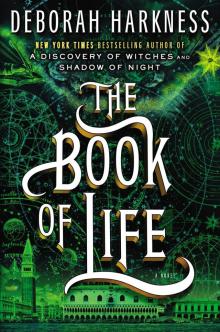 The Book of Life
The Book of Life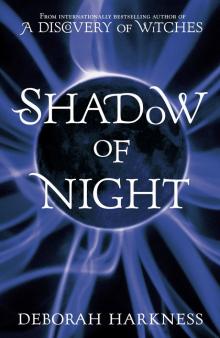 Shadow of Night
Shadow of Night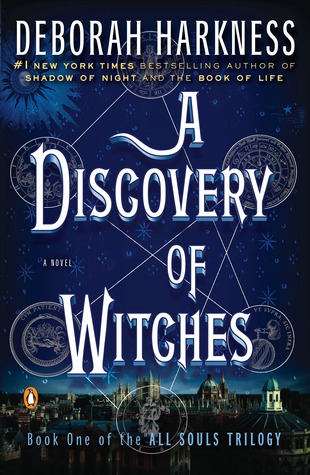 A Discovery of Witches
A Discovery of Witches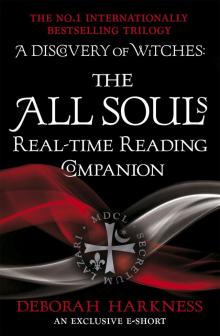 The All Souls Real-Time Reading Companion
The All Souls Real-Time Reading Companion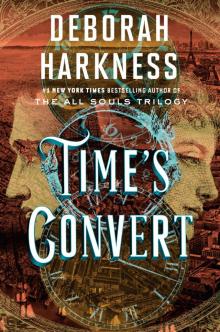 Time's Convert
Time's Convert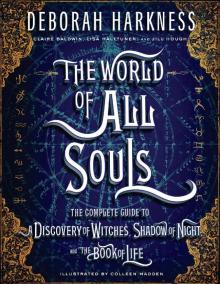 The World of All Souls
The World of All Souls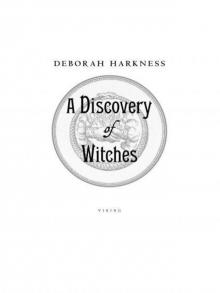 A Discovery of Witches: A Novel (All Souls Trilogy)
A Discovery of Witches: A Novel (All Souls Trilogy) Shadow of Night: A Novel
Shadow of Night: A Novel